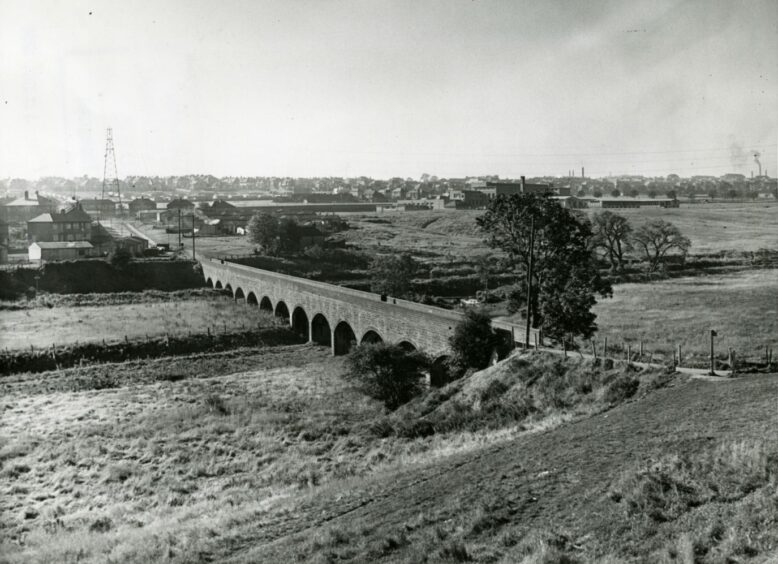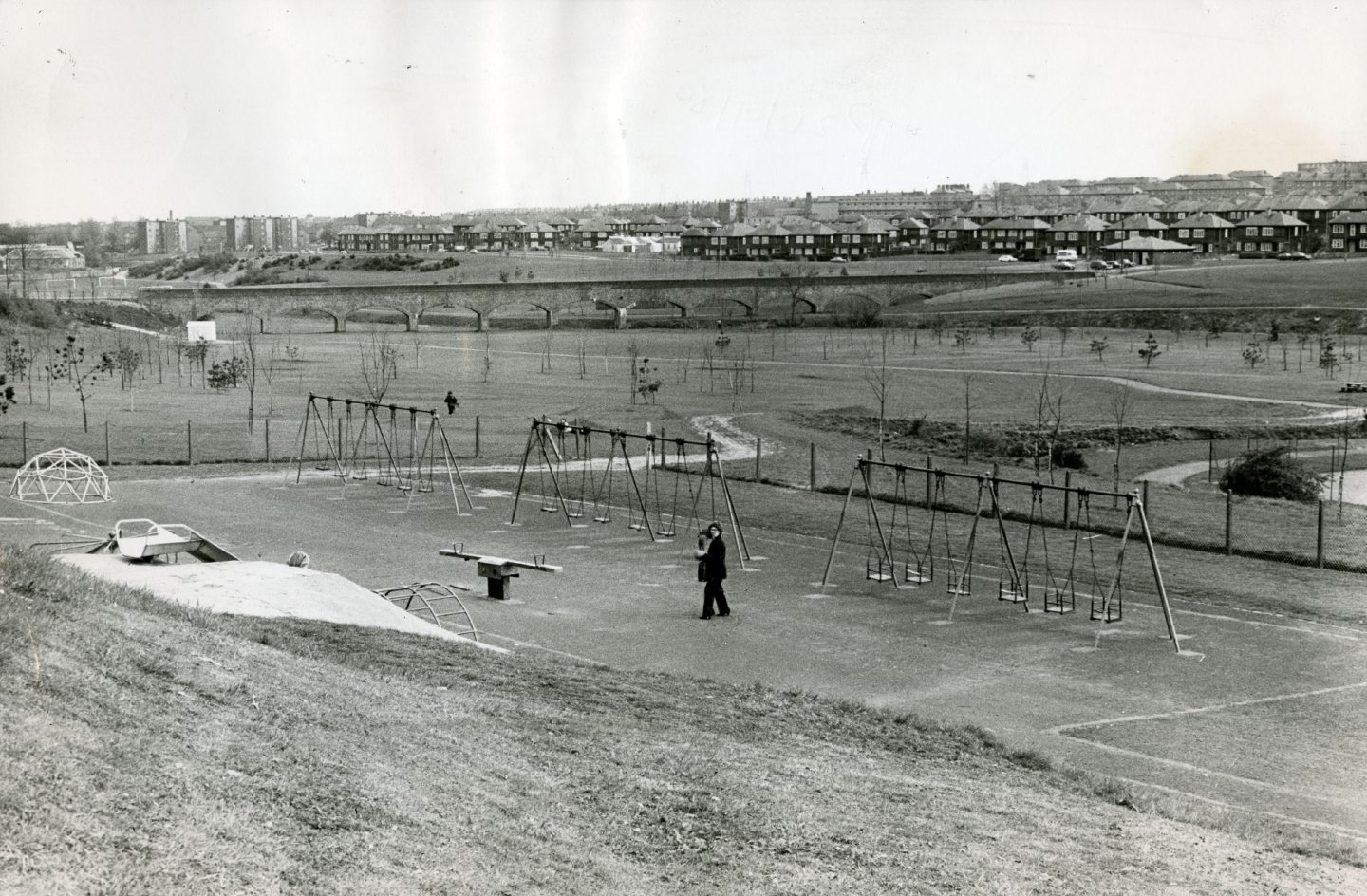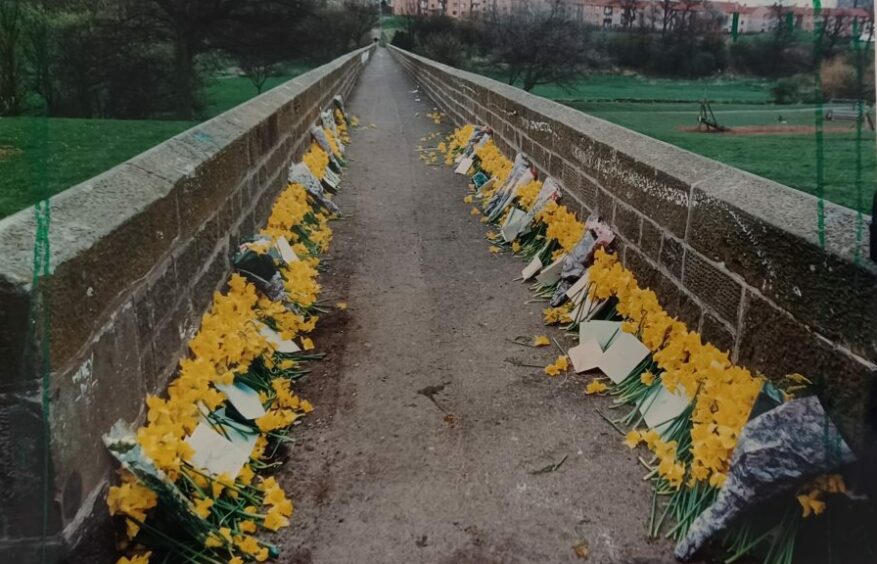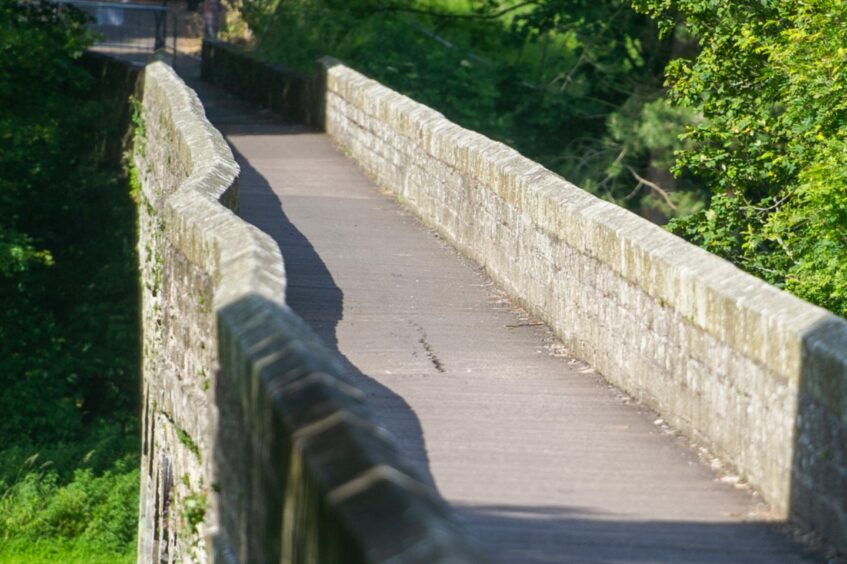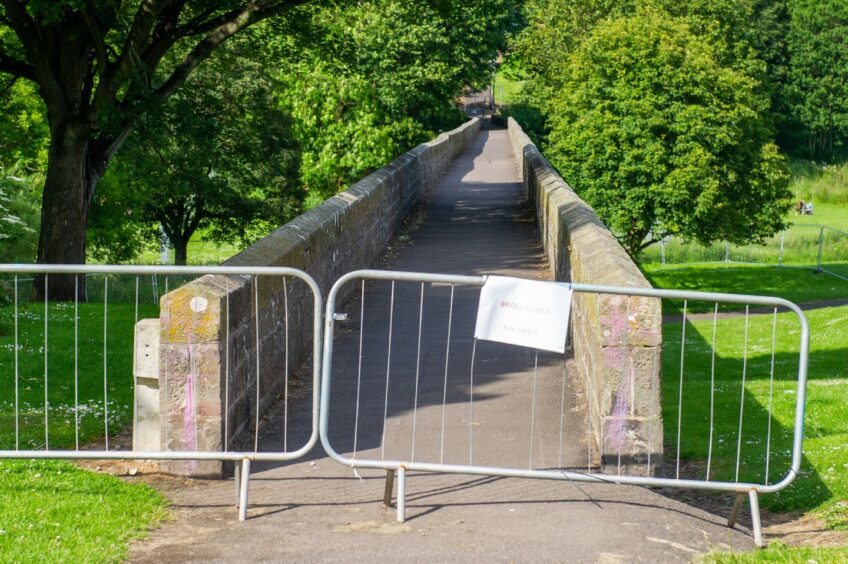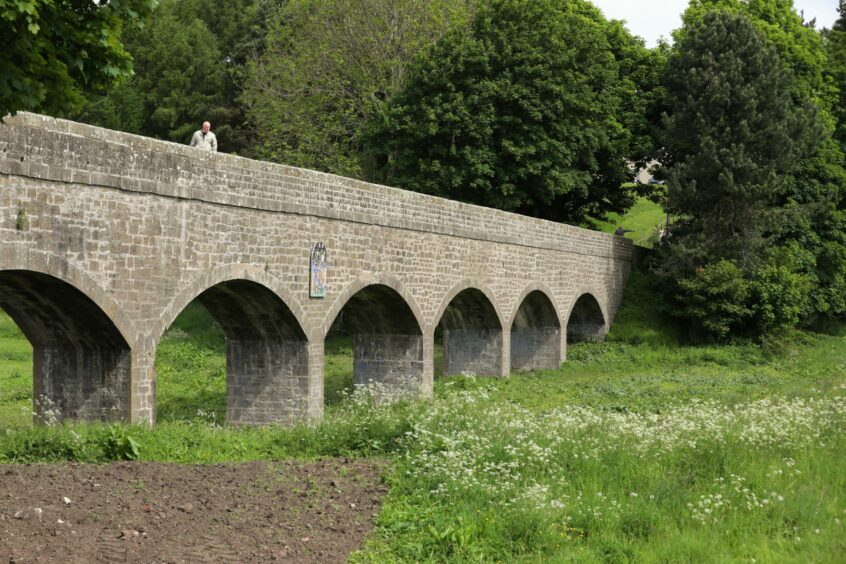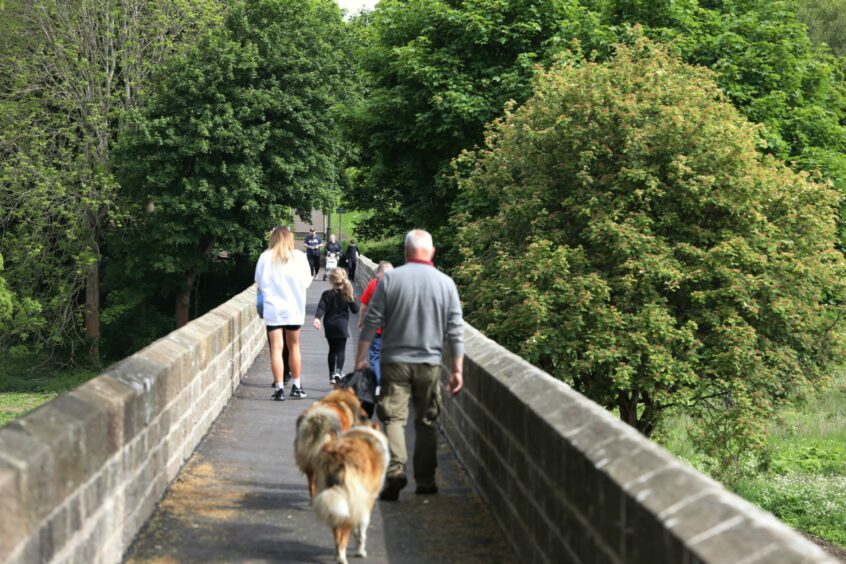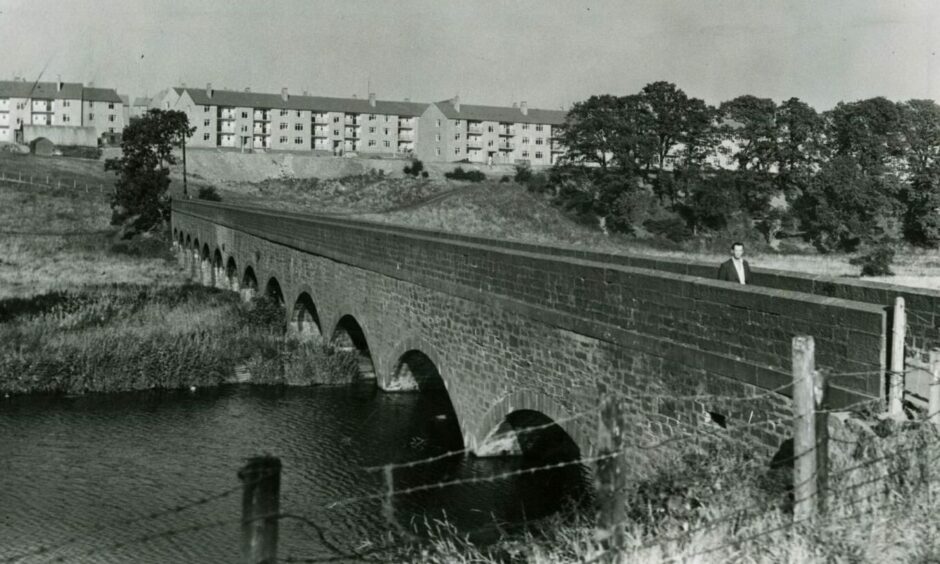
History came tumbling down and a link to the past was broken when Finlathen Bridge partially collapsed in July 2019.
The 500ft long structure with 13 arches was originally built in 1846 to carry the first water pipeline from Monikie over the Dighty burn to Stobsmuir water works.
This was probably the largest stone aqueduct for public water supply in Scotland.
Engineered by James Leslie for the Dundee Water Company, it was originally covered with turf to keep the pipes cool in the summer and above freezing in the winter.
It rapidly proved inadequate, despite the laying of a second 15-inch diameter main in 1862, and had to be supplemented in the 1870s by the loch of Lintrathen.
The aqueduct stood firm during the industrial changes in the landscape at Finlathen Park from mills, ponds, drying greens and bleachfields to wasteland and parkland.
In the middle of the 20th century it was converted into a footpath with tarmac following the construction of the Fintry estate on farmland between 1949 and 1960.
The bridge was a thoroughfare between Fintry and Linlathen.
It was a crossing point for pupils getting to Linlathen High School and was surrounded by a BMX track, pitch and putt course and adventure playground during the 1980s.
That’s not to say it was all positive, though.
There were problems at the bridge in the 1960s, ’70s, ’80s and 90s when mob rule took hold and the Fintry Shams did battle against the Linlathen Hula and The Mid.
Things came to a head in 1998 when 15-year-old John Kidd collapsed and died after being struck with a rock during a confrontation between teenage gangs in 1998.
Things settled down for a time.
Then the bridge was closed in 2007 for expensive repairs on safety grounds when huge chunks of brickwork were knocked out by vandals which left gaping holes.
Things got worse the following decade when Old Father Time started calling the shots and the Finlathen bridge was now starting to show its age.
One wall on the B-listed bridge was no longer straight and began visibly bulging away from the rest of the structure in July 2019.
A council spokesman said: “The pedestrian bridge in Finlathen Park has been closed as a precautionary measure to allow officers to assess the integrity of the structure in isolated areas.
“It will be cordoned off over the next few days and diversions put in place for members of the public.”
A bridge too far?
It was closed and cordoned off amid concerns over safety when a night of heavy rain exacerbated the growing bulge and the middle section of the wall crumbled.
This looked like the end for the bridge.
Residents of both communities rallied to the cause and called for the aqueduct to be saved and described the path as a “landmark” and said it was “vital” to the two areas.
Fintry Community Council chairman Ronald Neave said: “I think people are keen to see it open again.
“It has been a well-used bridge.
“I don’t know how they could repair it as you would be mixing old with new, but we do want to know what is going to happen.
“The councillors have mostly been away for the summer, but that’s them all coming back now so we’re hoping to get an answer soon.
“We’ll certainly be pushing them for one.
“We are where we are, but the council really should have been maintaining it a bit more.
“Maybe once or twice more a year might have saved it.”
Mr Neave warned that some young people were still risking life and limb by breaking through safety barriers to cross the bridge even after its collapse.
He said: “If someone fell from there and some more of the bridge comes away with them, they would not stand much of a chance.
“But to be fair to the council they have reinforced the barriers, so I don’t know what more they can do.”
Dundee City Council acknowledged the strength of public feeling in September 2019 and confirmed the affected span would be rebuilt using recovered sandstone.
A spokesman for Dundee City Council said: “Engineers will deconstruct a section of the bridge including the parapet wall which is currently leaning.
“That, along with the section that collapsed, will be rebuilt in spring next year as the lime mortar that has to be used is not suitable for low temperatures.”
It was.
The Dighty Burn link was repaired south of the water during 2019/2020 before the city development committee voted through a second phase of restoration works to be sure that the bridge’s structure was sound along its entire length.
The £700,000 bill tackling the north of the burn was agreed in March 2021.
Short-term pain versus long-term gain
Dundee Plant Company reconstructed and refurbished the length of the bridge including using Redi-Rock gravity retaining walling for bank erosion.
A spokesman for the company said it was a pleasure working on this “fantastic” and “truly one of a kind project” when the structure reopened in April 2022.
The Courier reported: “Finlathen Viaduct in Dundee has reopened to the public following a £1 million restoration project spanning three years.
“Part of the landmark footbridge crumbled due to water saturation in the summer of 2019.
“It was shut suddenly in July 2019 after a bulge appeared in a section of the wall.
“But following torrential rain just weeks later, the southern section crumbled into an embankment below.
“The 13-arch bridge was restored over two phases between 2019 and 2022.”
Saving a piece of city’s history
Convener of the city development committee Mark Flynn said: “This major project has restored what is a much-loved and well-used local landmark to its former glory.”
So what was the verdict from locals when the bridge reopened?
Many took to social media to praise Dundee Plant Company for saving history!
Bill McIntosh said: “Well done to Dundee Plant.
“Restoring part of Dundee’s heritage.”
Anita Butchart spoke for generations when she added: “Well done Dundee Plant.
“You saved a piece of Dundee history, imprinted into the memories of many who used this beautiful bridge.”
Finlathen Aqueduct is still standing and spanning the ages today.
